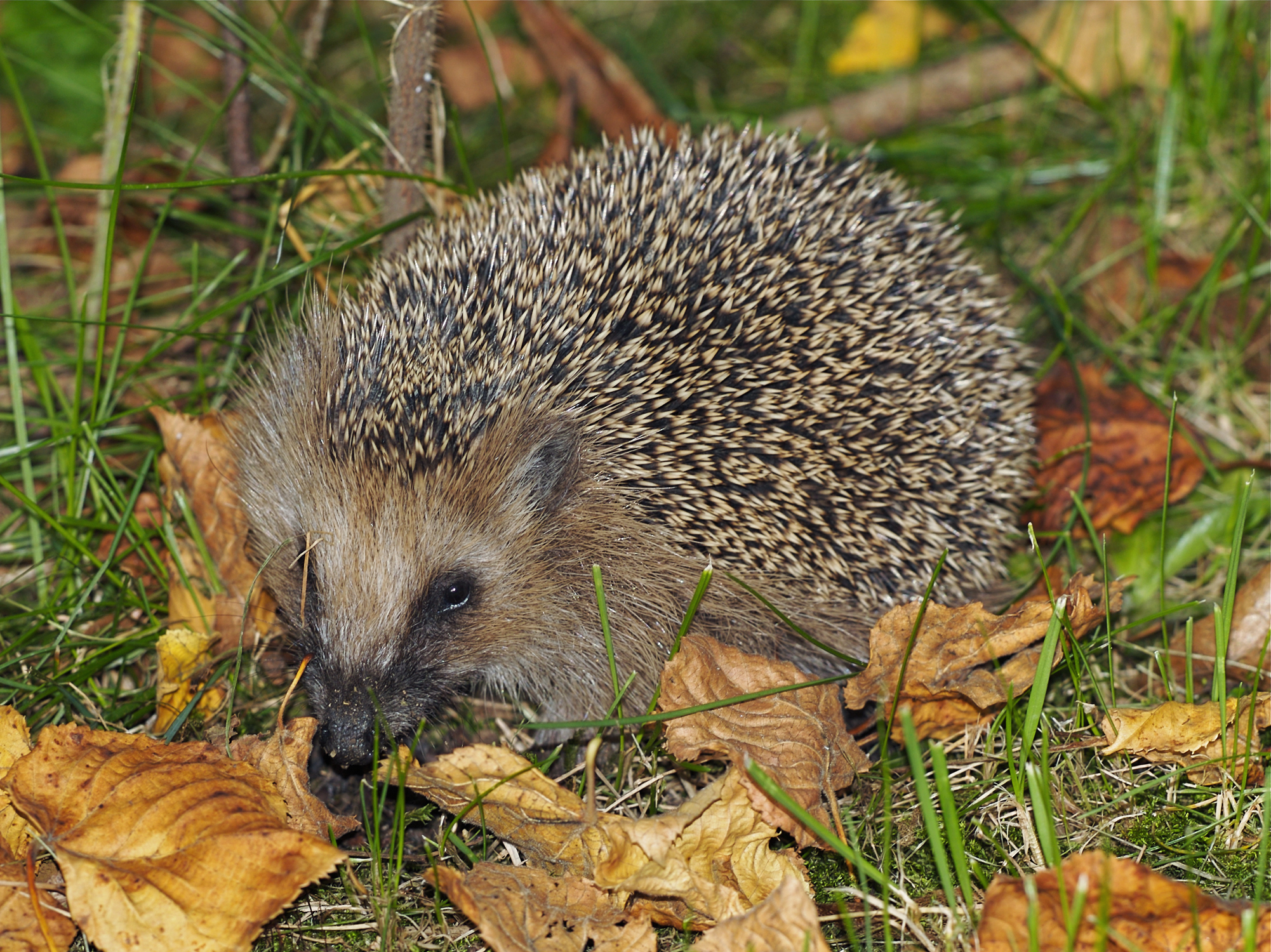- West European Hedgehog
Taxobox
name = West European HedgehogMSW3 Hutterer | pages = 214]
status = LR/lc
status_system = iucn2.3
status_ref = IUCN2006|assessors=Insectivore Specialist Group|year=1996|id=29650|title=Erinaceus europaeus|downloaded=12 May 2006 Database entry includes a brief justification of why this species is of least concern]

image_width = 260px
regnum =Animal ia
phylum = Chordata
classis = Mammalia
ordo =Erinaceomorpha
familia =Erinaceidae
subfamilia =Erinaceinae
genus = "Erinaceus "
species = "E. europaeus"
binomial = "Erinaceus europaeus"
binomial_authority = Linnaeus, 1758The West European Hedgehog ("Erinaceus europaeus"), or simply the European hedgehog, is a
hedgehog species found throughout thePalaearctic region, except in theHimalaya s andNorth Africa . It is not commonly found above 60°N inlatitude , except forFinland ,Sweden and the Northwestern-most parts ofRussia .This hedgehog is about 20 cm in length, and lives in
woodland , farmland, andsuburban areas. It isnocturnal , and if alarmed will roll itself into a ball, protecting itself against potentialpredator s with its spines.Unlike the smaller, warmer climate species, the West European Hedgehog may hibernate in the winter. It is omnivorous, feeding on a wide range of invertebrates, but preferring
slug s,earthworm s,beetle s and otherinsect s. The preferred arthropods are the millipedes "Glomeris marginata " and "Tachypodoiulus niger " as well as theground beetle "Carabus nemoralis ". [cite web |url=http://animaldiversity.ummz.umich.edu/site/accounts/information/Erinaceus_europaeus.html |title="Erinaceus europaeus": western European hedgehog |publisher=University of Michigan |work=Animal Diversity Web |author=B. Lundrigan & J. Bidlingmeyer |year=2000] It is also known to eatfrog s, smallrodent s, youngbird s and birds' eggs.This species has become a serious pest in the
Western Isles ofScotland , where introduced hedgehogs eat the eggs of ground-nesting waders such as Snipe,Dunlin ,Redshank and Lapwing. It is also considered a pest inNew Zealand where it preys upon the native giant snails (Powelliphanta ),weta , and various other native invertebrates"Blonde hedgehogs" have a rare recessive gene giving rise to beady, button-black eyes and attractive creamy-coloured spines; they are not strictly speaking
albino . They are extremely rare except on theChannel Island ofAlderney and are nicknamed "Alderney Spike Girls". A population of around a thousand is believed to exist. They allegedly carry no fleas, and are a localised island variant of "Erinaceus europaeus".A low coverage assembly of the genome of "Erinaceus europaeus" was released by the
Broad Institute in June 2006 as part of the Mammalian Genome Project. [cite web | url = http://www.ensembl.org/Erinaceus_europaeus/index.html | title = Hedgehog | accessdate=2007-06-11 |work=Ensembl Genome Browser]Protection list
On August 28, 2007, the new
Biodiversity Action Plan (BAP) [launched in 1997] included the West European Hedgehog on the list of species and habitats in theUK that need conservation and greater protection. [ [http://news.bbc.co.uk/2/hi/science/nature/6965681.stm BBC NEWS, Hedgehogs join 'protection' list] ] [ [http://www.ukbap.org.uk/PrioritySpecies.aspx?group=8 BAP Terrestrial Mammal List] ]In Denmark, hedgehogs are protected by law. [http://www.skovognatur.dk/DyrOgPlanter/Pattedyr/Insektaedere/Pindsvin.htm The Forest and Nature Department] It is illegal to capture or hurt them, but it is accepted to house underweight hedgehogs found out during winter. Garden owners are encouraged to attract hedgehogs with a bit of dry cat food, to utilize their pest control abillities.
References
External links
* [http://www.arkive.org/species/ARK/mammals/Erinaceus_europaeus/ ARKive] Photographs and Videos.
* [http://www.wildlifeonline.me.uk/hedgehogs.html WildlifeOnline - Natural History of the European Hedgehog]
Wikimedia Foundation. 2010.
